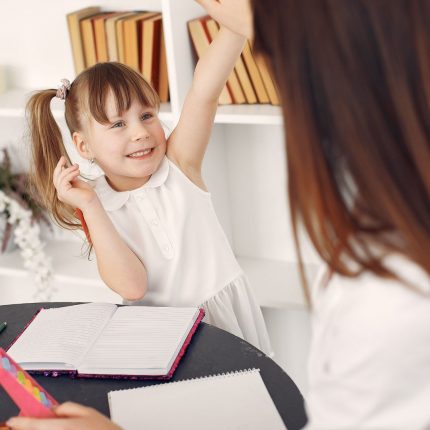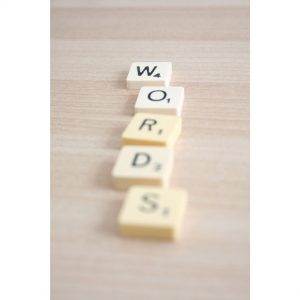
SOS: A Life-Saver for Help with Spelling
December 10, 2022Guest post by Orton Gillingham for All
Spelling can be challenging for anyone, but throw in a word that makes no sense phonetically and it can throw students for a loop. The word might be digested only to have letters transposed or the spelling forgotten again.
Simultaneous Oral Spelling (SOS Technique) can be a lifesaver. It’s used in multi-sensory learning approaches, such as Orton Gillingham.
Multisensory Approach
Multisensory means we want students to hear what they see and spell what they hear. This is accomplished using lesson plans including auditory, visual, and kinesthetic parts. In an approach like Orton Gillingham, we start with phonemic awareness, teaching the smallest unit of a letter sound, and work our way up to syllable division, spelling rules, plural rules, and much more, until a full picture of the English language emerges. But what about those pesky sight words?
Simultaneous Oral Spelling Saves the Day
Simultaneous Oral Spelling uses a multi-sensory approach found in most multi-sensory lessons, but in this case, we are concentrating on learning non-phonetic words, or sight words.
Steps to SOS Spelling Technique
Let’s use the word, said. In this word, the “ai” sounds like a short “e” sound.
This is a sight word.
Steps:
- Pronounce the word.
- Say, “said.”
- Analyze the word. Look for the challenge.
- In said, the challenge would be that the ai sounds like short e.

- In said, the challenge would be that the ai sounds like short e.
- For an older child, have them copy the word, naming each letter as the student is writing. For younger children, you would have it on a card for tracing.
- Study the spelling. Look at it closely. It’s spelled strangely!
- With a pencil (or fingers for younger children who have cards), trace the word while naming each letter (not the letter sound, the name of the letter). Do this 3 times (it’s important to do it three times). After the word is traced, underline the word with a pencil or finger moving from left to right.
- In our example word, said, trace the word three times while naming letters:
- “s-a-i-d – said, s-a-i-d said, s-a-i-d said”
- (Underline the word each time with a pencil or finger)
- Hide the word (or if using a card turn it over); write the word on paper. Name each letter as you write. In our example: “said.”
- Write the word from memory – read – check – cover
- Write the word from memory – read – check – cover
- Write the word from memory – read – check – cover
- Read the word just written. Check against the traced word to make sure it is correct.
- Hide-Write-Read-Check until the word is written three times correctly, from memory.
A word can usually be retired after 10 times of being spelled correctly. You could start the next lesson with the same word(s), especially if there were any issues with a particular word, to be sure it is committed to memory after a break from it.
Example Sight Words
- Pre-K: a, come, one, said, the, to, two, where, is (these would be done on word cards at this age)
- Kindergarten: are, as, do, four, have, pretty, there, they, want, was, what, who (could do a combination of word cards and writing the words depending on level)
- Grade 1: again, any, could, give, live, of, once, put, some, were, walk, know
- Grade 2: been, buy, don’t, many, pull, their, very, would, your
- Grade 3: carry, does, done, full, laugh, only, small
- Grade 4 and above: again, also, always, blood, beautiful, build, calf, clothes, cough, courage, door, debt, doubt, enough, eye, February, flood, friend, from, goes, gone, guard, guest, guy, half, ocean, often, pull, push, son, should, talk, touch, though, Wednesday, whom, whose, wolf, worm.
Help is On the Way
Orton Gillingham for All has an SOS Technique workbook to help with using this technique with students. Included are 7 lists for Pre-K and up (4th grade+), 252 words. There are mini “cards” with each word, followed by worksheets with traceable letters and blanks for writing the words from memory. Also included are checklists for each list.
Multi-Sensory Teaching, Speaking Broadly
Orton Gillingham (OG) is a multi-sensory approach to learning phonics. It was developed for dyslexic students to retain information easier, but many mainstream educators have adopted this approach. The reason is that it is so thorough. As mentioned, students with dyslexia tend to have trouble retaining information as readily as others. They are just as intelligent as the next student but may need to see a concept more times to digest and commit long-term. That’s where OG comes in. This approach uses motor memory (kinesthetic learning) in addition to auditory and visual learning.
A cornerstone of OG is drill cards. Many lessons start with, “first, get out your drill cards.” Students learn that some letters make one sound, and some make two or more. For example, B only says, /b/ as in the word bat, but S can say /s/ as in the word sun, or /z/ as in rose. Moving from sounds of letters, students learn valuable rules like the FLOSS rule, which says that a one-syllable word with F, L, or S at the end and a short vowel sound will double the F, L, or S. This is just one example of four Short Vowel Rules.
Another cornerstone of Orton Gillingham is syllable division. Students learn syllable types and how to break down words based on syllable rules. For example, a VCCV is a vowel-consonant-consonant-vowel word. A student learning to divide RABBIT words would label the VCCV, starting with the A (in RABBIT) and, based on the division rule, divide between the two Bs in Rabbit. The student would have two closed syllables and by the rule, CVC words are blocked in by the consonant, they would know to pronounce the word with two short vowels, RAB BIT.
OG’s rule-based, multi-sensory approach continues all the way through a scope and sequence until a thorough view of the English language is achieved.
There are many scope and sequences for Orton Gillingham or similar approaches. Some ask if a scope and sequence is necessary, and the answer is, yes. A good reason to use a scope and sequence is to make sure you are not teaching something way too advanced too early. A scope and sequence can be a guide. Even if not followed exactly, allow a scope and sequence to be your ship and you act as its captain.
Additional Homeschool Resources
5 Important Facts About Dyslexia
Homeschool Curricula for Dyslexia and Dysgraphia
The Hidden Flip-Side Strengths of Dyslexia
Latest Posts

This post is sponsored by Little Monsters Universe. I'm Tina Salmanowitz, an advocate for homeschooling and science education. With over a decade of experience as a science educator (in class…
Read more >
This post is sponsored by Time4Learning. Before the pandemic, it was business as usual for Boca Raton resident Nikki Warris. Her two daughters, 5-year-old Natalie and 8-year-old Lexi were…
Read more >
Are you a "Green Goddess" or a "Trash it Tom"? Recycling is an important thing we can all do to help preserve our environment. No doubt, you’ve heard the phrase “Reduce, Reuse, Recycle,”…
Read more >

